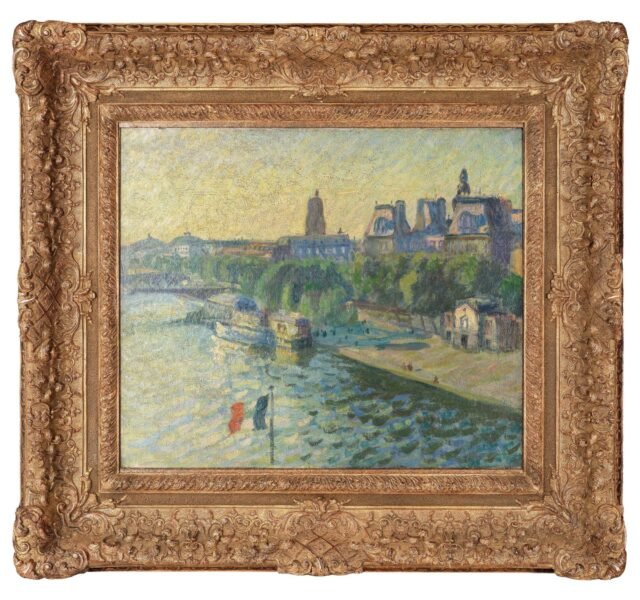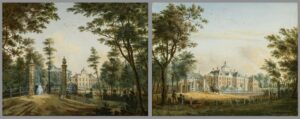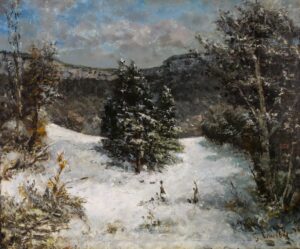Description
“Vue des quais de Paris devant l’Hôtel de Ville” by Raoul Dufy is a vibrant oil painting created around 1904, depicting the lively banks of the Seine in Paris with the iconic Hôtel de Ville in the background. Painted in Dufy’s early Fauvist period, the scene is bathed in shimmering colors and expressive brushwork characteristic of his approach to capturing Parisian light and atmosphere. The composition conveys both the architectural grandeur of the city and the dynamic movement of the river, employing energetic strokes and intense hues to evoke a mood of urban pleasure and optimism.
This painting reflects Dufy’s fascination with the Paris cityscape, as well as his transition from Impressionist influences towards the vivid coloration of Fauvism. The loosely defined forms, lively surface, and interplay between structure and spontaneity highlight his aim to celebrate the visual joy of everyday life rather than precise realism.. Dufy’s treatment of the water, trees, and buildings focuses on the effects of light and the rhythm of the city, inviting viewers into a world of fleeting pleasures.
Raoul Dufy (1877–1953) was a French painter, designer, and illustrator known for his association with the Fauvist movement.. Born in Le Havre, Dufy trained at the École des Beaux-Arts and early on absorbed influences from Impressionists like Monet and Pissarro. Inspired by Matisse, Dufy embraced the expressive possibilities of color, adopting bold palettes and freeing line from strict representation. Albert Marquet was a close friend of Dufy.
Beyond painting, Dufy was an accomplished textile designer whose Art Deco patterns greatly impacted fashion and decorative arts. His hallmark style emerged in the 1920s with vibrant, stenographic compositions emphasizing lightness, wit, and the pleasures of modern life.. Dufy’s legacy includes numerous public art commissions and a consistent thematic focus on leisure, festivity, and the beauty of everyday scenes.
Dufy is remembered for his optimistic modernism and ability to render the world with joyous intensity, making his works, like “Vue des quais de Paris devant l’Hôtel de Ville,” enduring symbols of urban vitality and artistic independence.











Reviews
There are no reviews yet.